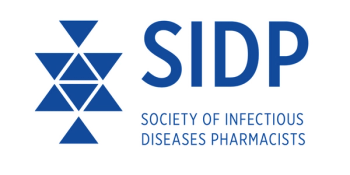
Antibiotics
Latest News

Latest Videos

CME Content
More News

Sharmeen Roy, PharmD, BCPS, discusses the role of Bayesian dosing, therapeutic drug monitoring, and hospital resource allocation.

Indwelling devices and previous antibiotic exposure increased the risk for these infections.

Clinical-stage company, BiomX, said its therapy, BX211, was found to be safe and efficacious for this infection that was associated with Staphylococcus aureus.

The Visby Medical Women’s Sexual Health Test can screen for chlamydia, gonorrhea, and trichomoniasis.

Pamela Kushner, MD, offers insights on the newly approved antibiotic including its novel mechanism of action, the new criteria incorporated into the phase 3 studies, and what it means for her to have this treatment available.

This is the first in a new class of oral antibiotics for uncomplicated urinary tract infections (uUTIs) in nearly 30 years.

This method represents a significant advancement in case management for this population. In our latest From Pathogen to Infectious Disease Diagnosis Podcast, Jose Alexander, MD, ABMM, ABAIM, FCCM, CIC, ASCP, BCMAS, provides insights on its capabilities and how it can potentially aid clinicians in reducing antimicrobial resistance.

Whitney Hartlage, PharmD, explores the role of expanded UTI definitions and urinalysis interpretation in addressing antibiotic overuse.

A long-term study conducted by the Centers for Disease Control and Prevention (CDC) shows early success in the reduction of such infections followed by an increase again during the early pandemic years. Additionally, certain pathogens overall saw an increase, whereas other infections were stable or saw decreases.


Alan Dunton, MD, director and chief medical advisor, Recce Pharmaceuticals, discusses the company’s novel product, R327G (RECCE 327), and offers insights into its potential indications and clinical trials.

The latest Bench to Bedside column reviews new guidance on the treatment of drug-susceptible and drug-resistance Mycobacterium tuberculosis infections.

A machine learning assessment agrees with an evaluation based on factors identified by infectious diseases experts that IDSA guidelines for treating uncomplicated UTI, last issued in 2011, remain valid today.

A spokesperson from the UK Health Security Agency highlighted key updates in the 2024 UK-AWaRe classification, aligning them with national AMR goals.

Erlinda Ulloa, MD, discusses a severe case including how they secured the phage treatment, and her experience with the investigational therapy.

Todd Riccobene, PhD, senior scientific director, Anti-Infectives and Infectious Diseases, US Medical Affairs + Health Impact at AbbVie provides more information on the newly approved antibiotic combination for these infections.

Here are some strategies to consider for optimal utilization.

The company’s investigational gel, RECCE 327, met primary and secondary endpoints, and it plans to progress to a phase 3 trial.

An inoculum effect in methicillin-susceptible S aureus infective endocarditis is suspected factor in higher all-cause 30-day mortality with cephazolin treatment than with oxacillin.

Hannah Pye, PhD and Evelien Adriaenssens, PhD explore the potential of phages in combating antimicrobial resistance and advancing health across human, animal, and environmental domains.

Heather Platt, MD, discusses Merck’s latest achievement with Capvaxive and its potential to significantly reduce invasive pneumococcal disease and pneumonia in high-risk adult populations across Europe.

This combination antibiotic is indicated for adults with limited or no treatment options, including gram-negative infections. It will be available in the third quarter of this year.

Fecal microbiota transplantation emerges as the top treatment, while probiotics show limited effectiveness in preventing CDI recurrence.

Gregory Fox, PhD discusses the V Quinn trial's results, exploring levofloxacin’s role in reducing TB incidence and the study's approach to combining data with the TB Champ trial.

Intravenous (IV) push is an attractive option to administer antimicrobial therapy to patients in an efficient and effective manner in a variety of clinical settings. While many advantages to IV push administration exist, clinicians should be mindful of available literature regarding safety profiles, pharmacokinetic/pharmacodynamic characteristics, and clinical data for IV push antimicrobial administration prior to utilizing it in specific patient populations.























































































































































































































































































